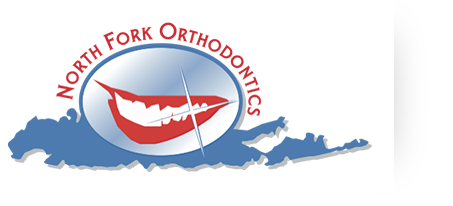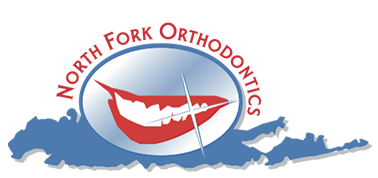Oral and Maxillofacial Surgery
Surgery on the mouth, face, and jaws
Oral and maxillofacial surgery is used to treat a wide range of problems with the head, neck, face, jaws, and other parts of the mouth and face. It is one of nine dental specialties that are recognized by the American Dental Association. This makes it a surgical specialty that is known all over the world.
People’s lives change when they smile.
To become an oral and maxillofacial surgeon, you have to go to dental school and then do a four-year residency in a hospital-based training program that is approved by the American Dental Association. Almost all of their training is about the hard and soft tissues of the face, mouth, and jaws. This makes them the best people to diagnose and treat diseases that affect both function and appearance in this area of the body. They are also very good doctors.
Conditions and How to Treat Them
Maxillofacial surgeons know a lot about oral and maxillofacial surgery and can treat many different conditions.
Orthognathic Surgery
- Orthognathic (jaw) surgery can be used to realign the teeth and jaws of people who have a misaligned bite or other problems with their bones or teeth. Jaw surgery may be needed if you have trouble swallowing or biting food, a lot of tooth wear, a receding chin, a jaw that sticks out, or sleep apnea.
Wisdom Teeth Removal
- The third molars or wisdom teeth are the very last set of teeth to come in. If they come out from the gum line, the jaw can make room for them, but sometimes this doesn’t happen, and the teeth become stuck. In some cases, you may need to take out a wisdom tooth that is stuck. Wisdom teeth that have partially or fully come in because of a misaligned jaw are more likely to get cavities, infections that keep coming back, and gum disease than those that haven’t come in yet. The American Association of Oral and Maxillofacial Surgeons strongly recommends that wisdom teeth be taken out when a person is a young adult. This will help prevent problems in the future and make sure the person heals well.
Cleft Lip
- During fetal development, parts or all of the mouth and nasal canals may not join together properly, causing a cleft lip and/or cleft palate. When this happens, the roof of the mouth breaks, leaving a space between the top lip and the top teeth. Unless it is fixed by surgery, a cleft palate can make it hard to eat, speak, and hear. A team of oral and maxillofacial surgeons from different fields works on these problems over years of treatment and surgery.
Trauma to the Face
- A maxillofacial injury or facial trauma is any injury to the mouth, face, or jaw. A broken bone is one of the most common types of major facial injuries. People can break their lower and upper jaws, cheeks, and eye sockets. Because of these problems, it may be hard to see, breathe, talk, or swallow. Because of this, oral and maxillofacial surgeons need to be very skilled. Seatbelts, mouthguards, and the right helmets and masks must be worn by everyone who does any kind of sport, no matter how experienced they are.
Surgery on the Temporomandibular Joint
- The temporomandibular joint (TMJ) is where the skull and lower jaw meet in front of the ear. It lets the lower jaw move and work. Temporomandibular Disorder causes pain in the jaw, earaches, headaches, limited mouth movement, clicking and grating sounds, and soreness in the ears and head (TMD). There are many ways to treat TMJ dysfunction, from simple medical and dental treatments to more complicated surgeries. If non-surgical treatment doesn’t work or there’s clear damage to the joint, arthroscopy or direct surgery to fix the damaged tissue may be needed.
Mouth cancer
- Oral and maxillofacial surgeons recommend that everyone check their mouths for signs of oral cancer once a month as a safety measure. Talk to your oral and maxillofacial surgeon if you have white or red spots, a strange lump, a sore throat or hoarseness that doesn’t go away, or trouble chewing or swallowing. A biopsy will be done to get an accurate diagnosis of the illness.
Dental Implants
- When a person loses a tooth, an oral and maxillofacial surgeon will surgically place a dental implant in the person’s jawbone. Because they are made of titanium metal and fuse with the jawbone through a process called osseointegration, dental implants can’t be taken out or broken down. Because dental implants fuse with the jawbone as they heal, bone loss is usually not a problem.
Outpatient Anesthesia
- Oral and maxillofacial surgeons can give patients safe and effective outpatient anesthesia, such as local anesthetic, nitrous oxide, intravenous sedation, and general anesthesia. Residents in surgery have to do a rotation in medical anesthesiology as part of their training. During this time, they learn how to screen patients for anesthesia, give anesthesia, and watch patients after anesthesia.
Diode Laser Treatment
- We use a special diode laser to remove extra gum tissue safely and effectively so that more of the tooth’s surface can be seen and used for better looks and function. Lasers are used to change the shape of your gums so that they look better as the “frame” around which your teeth are placed. What is the best thing about laser therapy? Most of the time, you don’t need needles! When a topical anesthetic is put on the gums, the patient will only feel the slight movement of the laser point.
Optimal Bracket Positioning
- If your gums haven’t receded enough or if a tooth is coming in slower than expected, a laser may be used to remove extra tissue and expose enough tooth surface to place a bracket. If you don’t want to wear a hat, you can connect TADs to this instead.
Impacted Teeth
- A tooth that is impacted has not come all the way through the gums. We could use laser therapy to help a tooth come out instead of having to wait months for it to come out on its own or go through surgery.
Gingival aesthetic recontouring
- If your braces have been taken off, your orthodontist may suggest reshaping your gums to make your smile look better. Through a process called cosmetic gingival recontouring, the gum line is changed to show more of the teeth underneath. To make your top teeth look longer, your orthodontist will use a laser to remove extra gum tissue from around your top teeth. If the gum line isn’t even, aesthetic gingival recontouring can be used to shape the gum line so that the smile looks more even and symmetrical.







